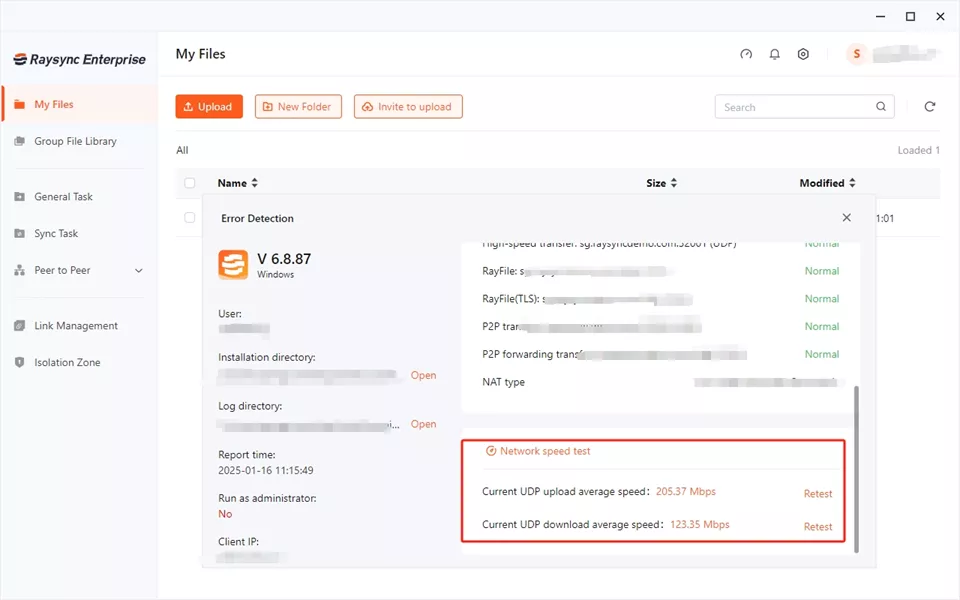Is Rsync Mac Available? [The Answer Is Here]
February 14, 2025Are you a Mac user looking for an efficient way to sync files and back up data? Meet Rsync, a powerful tool for file synchronization and transfer. Whether you’re on Mac OS or Mac OSX, Rsync has proven to be a reliable go-to option.
But how exactly does it work on Macs, and is there a way to optimize its functionality? This blog covers everything you need to know about Rsync Mac, from installation steps to alternatives like Rsync Mac OSX. Let’s discover how Rsync fits into the Mac ecosystem!

Part 1: Can I Use Rsync on Mac
Yes, you can use Rsync on a Mac. Rsync is a powerful command-line tool that is included with macOS. It's used for file synchronization and transfer, and it's a popular choice for backups and mirroring data.
To use Rsync on your Mac, you'll primarily interact with it through the Terminal app. This involves typing commands with specific options to perform various tasks like copying files, comparing directories, and synchronizing data between locations.
While Rsync is a command-line tool, there are also graphical user interfaces (GUIs) available that can make it easier to use. These GUIs provide a visual way to set up Rsync tasks and manage file transfers.
Part 2: Steps to Use Rsync on Mac
Using Rsync on Mac is simple once you have it installed. Here’s a guide to install Rsync on Mac:
Check Pre-installed Rsync Version: Open the terminal and type rsync --version to see the current version. If it’s outdated, proceed with installation.
1. Install Homebrew (if not already installed):
2. Open the terminal and run:
/bin/bash -c "$(curl -fsSL https://raw.githubusercontent.com/Homebrew/install/HEAD/install.sh)"
3. Install the Latest Rsync Version:
4. Run the following command:
brew install rsync
Basic Rsync Command:
Use this syntax to sync files:
rsync -av /source-folder/ /destination-folder/
Automate with Cron Jobs: For regular backups, set up a cron job to run Rsync automatically at specified intervals.
Part 3: Raysync - An Rsync Alternative for Mac [For Business]
Raysync is a high-performance file transfer solution tailored for businesses. While Rsync works well for personal use, Raysync offers advanced features that meet the demands of large-scale data transfers and synchronization on Mac systems. It offers a high-speed transfer protocol and achieves up to 100 times faster speeds than traditional and outdated methods.

Pros:
- Superior transfer speeds with 99% bandwidth utilization.
- Enterprise-level encryption for secure data handling.
- User-friendly interface with minimal setup.
- Cross-platform compatibility, including macOS.
- Efficient for large-scale file transfers and backups.
- Automated workflows to save time and effort.
Con:
- Higher cost compared to open-source tools like Rsync.
Pricing Model:
Raysync offers many pricing models based on the user needs:
|
Raysync Cloud |
SMB |
Enterprise |
|
|
Price |
USD $99/ Month |
USD $1,599/ Annual |
Tailored Plans |
|
Service Type |
Cloud |
On-premise |
On-premise |
|
Maximum User Number |
10 |
10 |
Unlimited |
Part 4: FAQS about Rsync
Let’s look at some of the common questions related to Mac OS Rsync:
1. Is Rsync Faster Than Rm?
Rsync and Rm serve different purposes. Rsync is designed for syncing and transferring files, while Rm is used for deletion.
In scenarios involving large files or directories, Rsync may seem slower due to its data-checking and transfer processes. However, it is more efficient when incremental updates are needed, as it only transfers modified files, saving bandwidth and time.
2. Does Mac Have Rsync?
Yes, Mac OS comes with a pre-installed version of Mac OS Rsync.
However, it’s often an older version. For advanced features, you can install the latest Rsync via Homebrew or other package managers.
3. Is Rsync Installed by Default on Mac?
Yes, Rsync is installed by default on macOS.
However, the Mac OS Rsync version may lack modern features. To unlock its full potential, consider upgrading through Homebrew.
4. Which Is Better, Cp or Rsync?
Cp is a simple copy command and is faster for basic file transfers.
Rsync, on the other hand, is better for complex tasks like incremental backups, remote transfers, and large-scale synchronization.
Conclusion
Rsync Mac is a reliable file synchronization and backup tool for Mac users. While suitable for individuals and small businesses, Raysync offers superior speed, security, and scalability for larger businesses. Explore Raysync today to elevate your file transfer experience on macOS.
You might also like

Industry news
September 28, 2021The next generation digital transformation process continues to accelerate, and enterprises will meet more challenges in the mixed IT environment with diverse systems and complex data.

Industry news
January 9, 2025Find the best secure file sharing solutions for law firms. Ensure client data confidentiality and streamline workflows with robust and compliant platforms.
